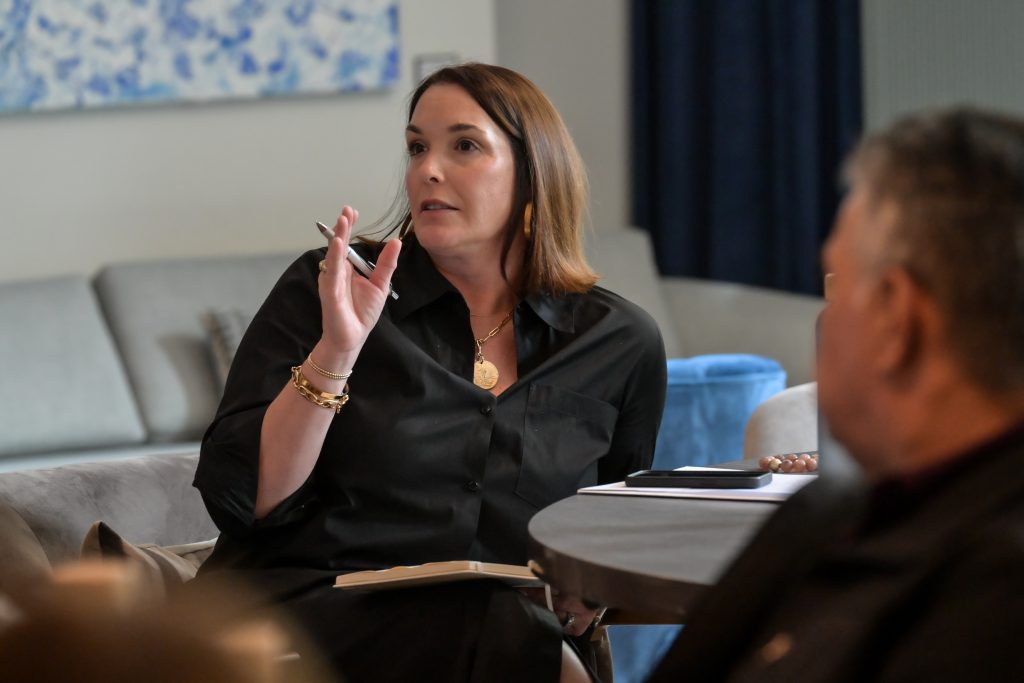You’ve worked hard to build your brand, burnish your reputation, and gain market exposure. Don’t let all that effort go to waste. Put in place a smooth, professional client onboarding process that will further enhance the client’s experience of working with you. They will be more comfortable that they’ve made the right choice in hiring you, and you will have gained their confidence and trust.
Pave the way to success
Whether they have worked with an interior designer before or not, prospective clients have lots of questions. As an experienced designer, you can anticipate many of them and provide answers in advance. This will help to alleviate some of the prospect’s anxiety and allow you to focus more quickly on the aspects of the project that are more particular to them and their needs.
Information that you can prepare in advance and share with the prospect prior to meeting with them include a list of frequently asked questions, a client-oriented description of your design process, your basic payment and billing practices, some references from previous satisfied clients, and a contact information sheet for them to complete and return to you.
If, after reviewing these materials the prospect wants to proceed with the project, you can follow up with a questionnaire to gather more information about them and the project prior to setting up a meeting. This will give you more detail to work with in advance as well as prompt the prospect to think more deeply about the project and their goals.
Lay the foundation for a productive working relationship
Once you’ve received the prospect’s responses, schedule a couple of initial interviews as the next step of the client onboarding process. The first is a screening interview, preferably conducted by phone, in which you explore with the prospect if you are a good fit for each other. If that goes well, schedule a face-to-face meeting at your office or neutral location to discuss the project in greater detail. This is when you can begin to gather information for the programming phase of the project.
This two-step process not only helps ensure the project is worth pursuing. It also establishes a professional working relationship with the prospect that tacitly states that you have options and standards as well, promoting a more balanced approach going forward.
Provide clear and comprehensive documentation
Should you and the client agree to work together, the next step is to finalize the sale. Follow up on your face-to-face meeting by providing the client with an initial proposal and a contract or letter of agreement. These should be written in a way that is easy for the client to understand.
A useful practice to help facilitate this part of the client onboarding process is to prepare a welcome packet for the client that includes:
- the proposal and agreement
- information about your firm and your team
- your contact information and preferred method of contact
- any supplemental documents that address questions or concerns that came up during the face-to-face interview
As a sweetener, you might want to add a coupon or certificate offering the client a discount on some purchases or additional services.
Establish guidelines and boundaries
It may seem counterintuitive to discuss guidelines and boundaries with the client who, after all, is hiring you. However, these can be presented and mutually agreed upon in a congenial manner. In the long run, having guidelines and boundaries will alleviate a lot of questions and confusion, making for a smoother working relationship.
Here are a few of the boundaries you should consider setting:
- how, when, and how frequently you will communicate with each other
- your hours of availability
- how often meetings will be face-to-face or by phone or video call
- who the client should contact if you are not available, an emergency arises, or a meeting needs to be rescheduled
Deliver superb customer service
You always aim to exceed your client’s expectations through your design. Do so through your business practices as well. Having gotten the project and your relationship with the client off on the right foot, build on that momentum by ensuring you and your team continue to provide excellent customer service throughout the project. You want to be responsive to questions and concerns. In responding to such issues, provide as much information and clarity as you can, and, of course, always be honest and direct with the client. Try to adhere as closely as possible to the agreed-upon schedule. Provide little extras and sweeteners along the way. Make the client feel that you get them and that they are special to you.
To close the loop on your client onboarding process, establish an exit process as well. When the project is completed, be sure to set up time for a post-project follow-up. This is the time to request a referral as well as establish a way to continue to keep in touch, for example, through seasonal emails or a client newsletter. A satisfied client can become your next customer for life.
